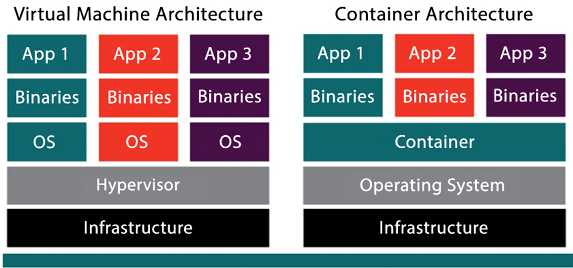Containers versus VMs
There is a definite line of distinction between VMs and containers. Containers allow you to isolate applications within an OS environment. VMs allow you to isolate what appears to the users and represent it as a completely different machine to the user, even with its own OS.
The following diagram illustrates the difference:

Figure 13.1: VMs versus containers
As we can see in Figure 13.1, in the case of VM architecture, each virtual slice has its own OS and all the slices sit on top of the hypervisor. In the case of container architecture, there is only one OS installed for all the instances. There is only one container engine, but multiple binaries and applications can be installed for each slice.
Containers share a kernel at the OS level; all components are built into the OS kernel, which makes containers fast to start and, when compared to VMs, they generally have lower overhead.
VMs have a more defined isolation boundary...































































